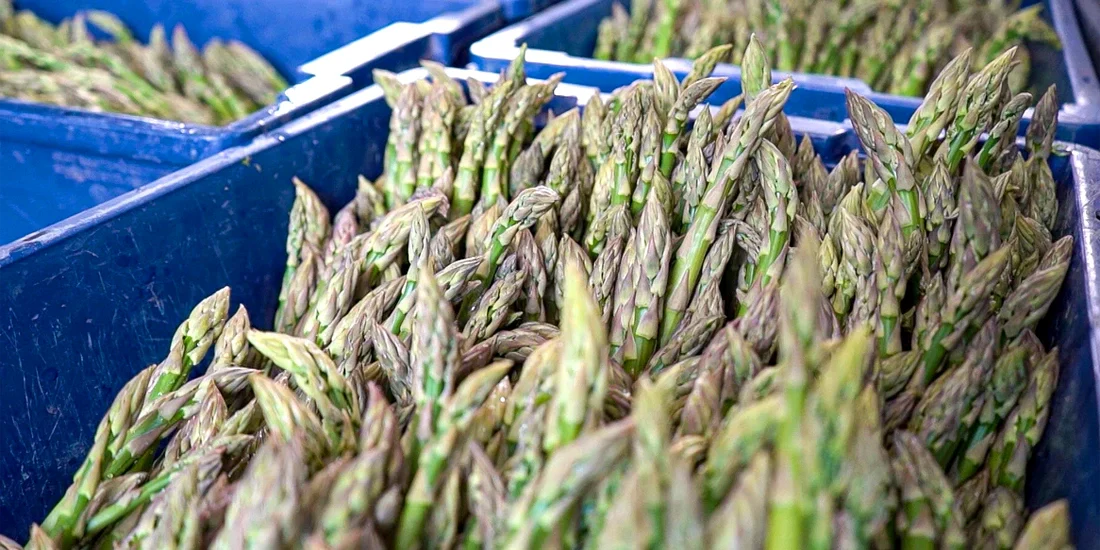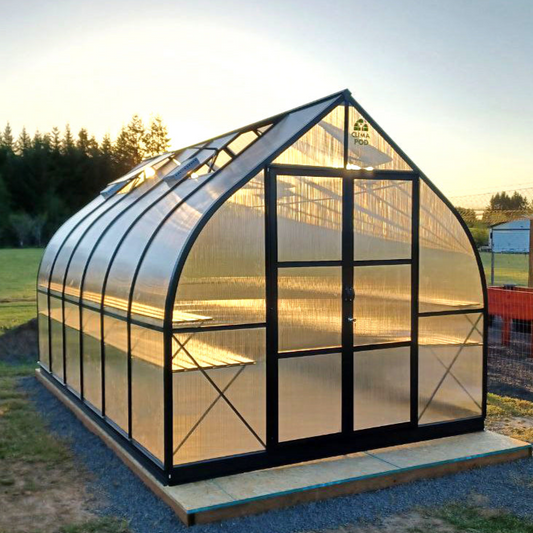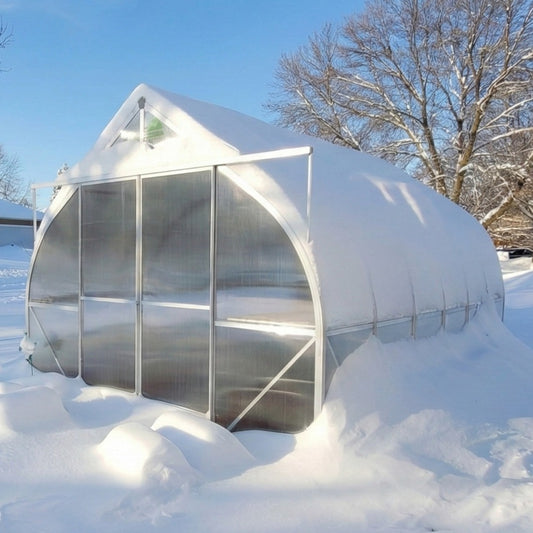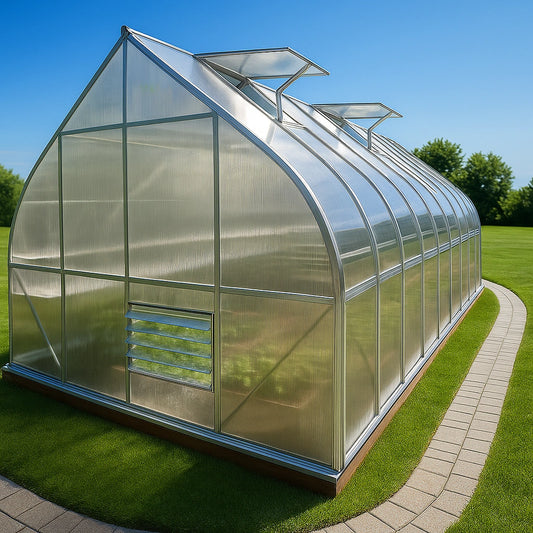
How to Grow Asparagus in a Greenhouse: A Gourmet Crop for Year-Round Harvests
Asparagus is a gourmet, nutrient-rich perennial vegetable prized for its tender shoots and subtle nutty flavor. Though traditionally grown outdoors, greenhouse cultivation offers key advantages: earlier harvests, season extension, and the possibility of winter production through root forcing. This comprehensive guide walks growers through the process of greenhouse asparagus production from variety selection to harvest and beyond.
Benefits of Greenhouse-Grown Asparagus
- Earlier yields: Greenhouse asparagus can be harvested 2–4 weeks earlier than field-grown crops.
- Faster establishment: Protected conditions help crowns establish more quickly, slightly shortening the time to first harvest (typically year 3).
- Season extension: Heated greenhouses can produce asparagus into early summer or even winter through forcing.
- Protected environment: Shielding plants from frost, wind, and hail ensures better spear quality and reduced stress.
- Microclimate control: Temperature and humidity can be optimized for faster growth and improved flavor.
- Disease and pest reduction: While not disease-proof, greenhouses can reduce exposure to common pathogens.
- Premium quality: Greenhouse-grown asparagus is often more tender, uniform, and cleaner.
Choosing the Right Variety

Male F1 hybrids are generally preferred for greenhouse production because they’re more productive and don’t expend energy on seed development.
-
Top green asparagus varieties in the U.S.:
- Mary Washington: A classic American heirloom with good rust resistance.
- Gijnlim F1: Early Dutch hybrid known for high yields and smooth, tender spears. Good for green or white production.
- Backlim F1: Later hybrid, excellent for season extension with thick spears.
- Xenolim F1: Early male hybrid with uniform green spears.
- Franklim F1: Vigorous early green variety with consistent quality.
- White asparagus: Achieved by mounding soil or excluding light, no separate variety required, though Gijnlim and Backlim perform well.
- Purple asparagus: Try Purple Passion or Viola - sweeter, lower in fiber, and rich in anthocyanins.
Where to buy: Order one- or two-year-old crowns (roots) from reputable nurseries. Starting from seed is possible but takes an extra year or two to harvest.
Preparing the Greenhouse and Soil

Asparagus is a long-lived crop, plantings often last 15–20 years, so proper soil preparation is critical.
- Soil type: Loose, well-drained sandy loam with high organic matter.
- Soil pH: Neutral to slightly acidic (6.0–7.0).
- Drainage: Avoid saturated soil; groundwater should be >3 feet deep.
- Light: Full sun is essential in the greenhouse.
- Best previous crops: Legumes, cucumbers, tomatoes, onions. Avoid planting after asparagus or other Fusarium-prone crops.
Steps for Soil Prep
- Clear and disinfect greenhouse structures.
- Double-dig beds at least 16–24" deep to accommodate deep roots.
- Add aged manure (20–30 lb/10 ft²), compost, or worm castings.
- Incorporate per 10 ft²:
- Superphosphate: 2–3 oz
- Sulfate of potash: 1–1.5 oz
- Add nitrogen (e.g., ammonium nitrate) in spring before planting.
- Trench planting: Dig 12–16" deep trenches. Add compost, cover with 4–6" of amended soil. Create mounds every 12–18".
Asparagus Planting Methods in a Greenhouse

1. From seed
- Sow indoors (Feb–Mar) or outdoors (Apr–May) for transplants.
- Soak seeds in warm water (77–86°F) for 2–3 days, then pre-germinate in moist paper towels.
- Transplant seedlings once they have 2–3 true leaves.
- Full harvest begins in year 4 from seed.
2. From crowns
- Best method for fast results.
- Planting time: Early spring (March–April) is ideal; fall planting is possible in warm regions.
- Crown prep: Use healthy, firm crowns with 3–5 buds. Soak dry roots, trim if needed, and treat with fungicide if desired.
-
How to plant:
- Create soil mounds in trenches spaced 12–18" apart.
- Spread roots over the mound and cover crowns with 2–3" of soil (buds pointing up).
- Water well and mulch with compost or peat.
Note: Do not harvest asparagus in the first year. Allow spears to grow into ferns to strengthen the root system.
Caring for Asparagus in a Greenhouse
Watering
- Keep soil evenly moist, especially during establishment and droughts.
- Use warm water and avoid overwatering to prevent root rot.
Fertilizing
- Year 1: Light nitrogen (ammonium nitrate or compost tea) 2–3 weeks after planting. Mid-season: balanced NPK.
-
Year 2+:
- Early spring: Nitrogen-heavy fertilizer (e.g., urea).
- Post-harvest: Complete NPK with phosphorus and potassium to replenish roots.
- Fall: Add compost and phosphorus/potassium for winter mulch.
Other Care Tips
- Weed regularly and mulch to suppress weeds and retain moisture.
- Allow all spears to grow into ferns in year one.
- Cut back dead ferns in fall; remove and destroy to reduce disease risk.
- Provide ventilation and maintain ideal temps: 65–75°F day / 55–60°F night.
Harvesting Asparagus (Starting Year 3)

- Start: When spears reach 6–8" tall and ~½" thick.
- Method: Cut just below soil surface. For white asparagus, gently dig and harvest spears before they emerge.
- Frequency: Harvest every 1–2 days during peak season.
- Season length: 2–3 weeks in year 3, extending to 6–8 weeks in later years.
Do not harvest all spears, leave several strong shoots for plant regeneration.
Winter Forcing in Heated Greenhouses
- Use mature 3–4-year-old crowns dug in fall and stored at 34–36°F for at least 2 months.
- Plant tightly in containers or beds with moist potting soil.
- Maintain 64–68°F soil temp and ~60–65°F air temp.
- Lighting: For white asparagus, force in darkness. For green, moderate light is required.
- Harvest begins in 2–3 weeks and continues for 4–6 weeks.
Asparagus Pest and Disease Management
- Asparagus beetles (Crioceris spp.): Defoliate ferns. Control with neem or spinosad.
- Asparagus rust: Fungal disease causing rust-colored spots. Remove infected ferns, improve airflow, use copper sprays.
- Fusarium wilt: Soil-borne disease causing root rot. Rotate crops, use resistant varieties, and ensure good drainage.
- Slugs: Damage young spears. Use traps or iron phosphate baits.
Common Growing Challenges

- Thin spears: Caused by overharvest, young plants, or poor nutrition. Improve feeding and limit cutting.
- Bitter taste: Result of old spears or drought stress. Harvest early and water consistently.
- Yellowing plants: Possible pH issues, waterlogging, or Fusarium. Test soil and improve drainage.
Final Thoughts
Growing asparagus in a greenhouse is a rewarding long-term investment for both hobbyists and commercial growers. With the right variety, proper soil preparation, and consistent care, your greenhouse can produce tender, delicious asparagus spears for many years, possibly even year-round with winter forcing. Patience and precision are the keys to success with this elegant perennial crop.











